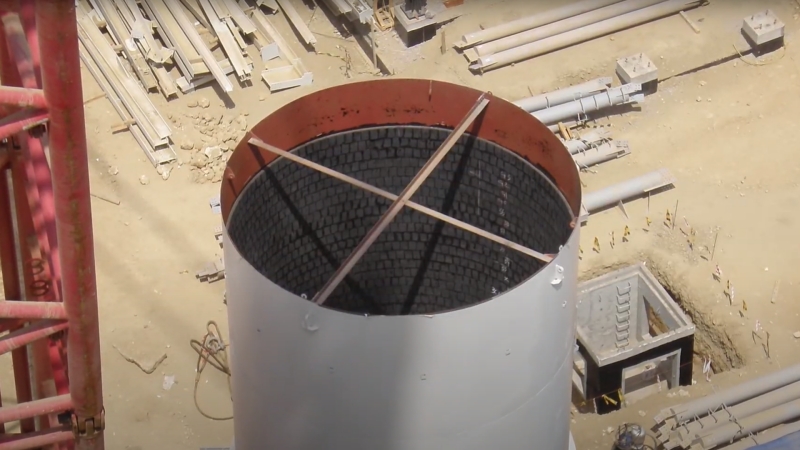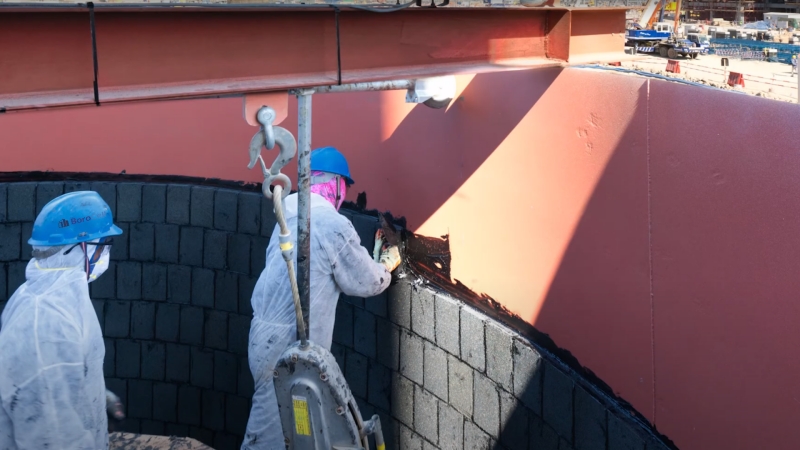FGD Wet Stack In Power Generation Station
A “wet stack” is a chimney, stack, or flue that exhausts saturated flue gas downstream from a wet-scrubbing process, such as a wet flue gas desulfurization (WFGD) system. These systems spray slurry (typically limestone-based) into the gas stream, which reduces the sulfur dioxide (SO2) content, saturates the flue gas with water vapor, and reduces the temperature of the flue gas to 115–130°F (46–54.4°C) for bituminous and hard coals and to 136–145°F (57–63°C) for lignite and sub-bituminous coals. All recently designed and constructed WFGD systems have installed wet stacks.
There are two primary scenarios for wet stack utilization:
– A new FGD system incorporating a new wet stack
– A new FGD system that will convert an existing dry stack to wet operation

The design of ducts and stacks for wet operation must address several issues that were not present in unscrubbed or reheated gas stack designs. Some of the important issues need to be considered in the design of a wet duct/stack system, the most two important issues for lining ductwork include:
– Corrosion/chemical attack
– Stack liquid discharge (SLD) and gas velocity in the liner
Corrosion/Chemical Attack
With wet stack operation, corrosion can be resisted by means of proper material selection. The exposed materials of the ductwork and the stack liner must be resistant to chemical attack. BoroCell® CL200 Borosilicate Cellular Glass Block is the ideal lining material for both the scrubber-outlet duct and the stack liner. It is chemically resistant to organic solvents and most acids because it consists of pure glass. No destruction of BoroCell® borosilicate block by aggressive media and atmospheres.
Stack Liquid Discharge (SLD)
The stack liquid discharge (SLD) is also known as rainout or acid-mist fallout. It is important to note that all wet stacks have some amount of SLD. However, SLD is only a problem if the droplets are large enough to be detectable at ground level near the stack.
One of the major objectives in developing an effective wet stack design is to limit SLD to a minimal acceptable level. The droplets may land on nearby surfaces surrounding the power station such as plant structures, equipment, and cars. Maximum deposition and collection of the liquid on the duct walls and stack liners must be achieved in order to control SLD.
According to the “EPRI Revised Wet Stack Design Guide”, chimneys lined with a borosilicate lining system can be operated safely, without spitting at velocities up to 18.3 m/s. Other liner materials can only withstand a lower stack liner velocity range.

Borosilicate-glass block is well suited for lining chimneys and ductwork for power generation industry.
Highly Recommend Product List For Chimney Liners
Foam Cellular Glass Wholesale Can Be Easy & Safe.
Start earning substantial profits in your country today!
Foam Cellular Glass wholesale can be easy. HUAYUE has helped customers in more than 30 countries to be successful and earn good profits. We also welcome you to become a distributor in your country.
After signing the agreement, your orders will be processed and shipped first. Click the buttons below, and let’s grow your brand together.
Don’t hesitate to contact us. Send us a message if you have any questions or request a quote or free samples. Our experts will give you a reply within 12 hours and help you solve various problems.
